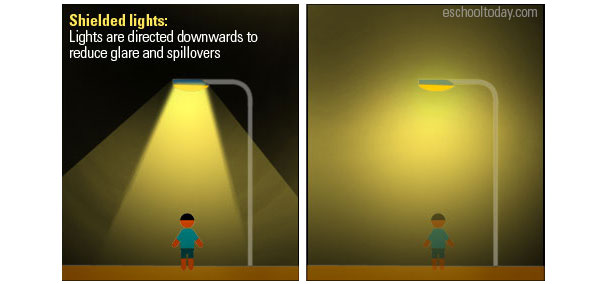- Light Pollution
What are the main sources of light pollution?
In a nutshell, all artificial lights that emit above the horizontal are likely to cause light pollution.
This is because much of it ends up straight above. In recent times, efficient design in lighting equipment makes it possible to direct light into specific places, thereby minimizing light spillovers.
The light that is directed downwards to minimize light pollution is called shielded lights (or full cut-off).
 Below are a few sources that contribute to light pollution.
Below are a few sources that contribute to light pollution.
Electronic Advertising Boards and Commercial Centers:
Many of the large electronic signboards in the cities and on highways are lit up by powerful lights that focus on the boards from below. Lights end up reflected upwards off the boards. Restaurants, discos, pubs, games, and shops in the cities also use a lot of light to attract customers. Many of the lights they use are not directed to any particular place, making its dispersion more than intended.
Night Sports grounds:
Floodlights that light stadiums and other places of sports often contribute to light pollution as the powerful lights end up upwards. These include the large light posts on the car parks.
Streetlights and car lights:
In some cities, hundreds of miles of powerful streetlights stay on all night. This, together with the vehicles that use the roads all contribute a lot to the light being directed above and to other unintended places. It has been estimated that about 35% to 50% of all light pollution is produced by roadway lighting (Ref 13). — LIGHT POLLUTION ENVIRONMENTAL EFFECTS OF ROADWAY LIGHTING, Carl Shaflik, BASc, PEng
City Parks, Airports, public places:
Many of these areas use many old-fashioned lights that are not shielded and have a lot of them emitting light upwards.
Residential Areas:
Light pollution in these areas tends to be of the glare and spillover type. Garden and landscape lights intended to add aesthetics to the landscape and architecture often end up as a nuisance at night, because they tend to irritate people as they walk or drive in these areas.
